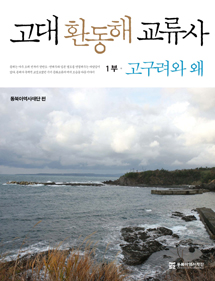Publication
- Date2011.06.20
- Hit1064

1. All rights of the contents and the electronic files in the Webpage are reserved for the Northeast Asia History Foundation.
2. No part of the Webpage may be reproduced, stored in retrieval system, or transmitted, in any form or by any means, without the prior permission.
Title: Diplomatic History of Ancient States surrounding the East SeaⅠ: Goguryeo and Wae
Northeast Asian History Foundation (Ed.)
Northeast Asian History Foundation|4x6 modification|KRW15,000|293 pages|May 14, 2010
ISBN 978-89-6187-179-2-04900
Set 978-89-6187-181-5
Before the establishment of ancient states, people living near the shores of East Sea engaged in exchanges with each other through seaways. It was in late 6th century when East Sea began serving as a channel for international exchanges and communication on the national level. Relations between Goguryeo and Wae across East Sea were followed by exchanges between Balhae and Japan. The title provides basic information regarding research on exchanges between Goguryeo/Balhae and Japan. The authors from both countries wrote articles for the title, so that readers can look at the historical exchanges from different perspectives. Also, the title focuses on identifying the remains and artifacts in Japan.
Table of Contents
Ch. 1 : People crossing East Sea and their role
1. Goguryeo's decision to establish diplomatic relations with Wae and its background
2. Goguryeo - Wae diplomacy and development of bilateral relations
3. Goguryeo monk Hyeja and Prince Shotoku
4. Goguryeo - Tang China confrontation and Wae
Ch. 2 : Traces of passages and exchanges
1. Origin of seaways in East Sea
2. Gaga's role in diplomatic relations surrounding East Sea
3. Remnant people of Baekje/Goguryeo and Wae (Japan)
4. Traces of Goguryeo remnant people - focusing on the outcomes of excavation in Komaji(高麗寺)
Ch. 3 : Cultural exchanges and origin
1. Goguryeo and ancient architecture in Japan
2. Gold sent by Goguryeo ― gilt bronze statue of Buddha in the Asuka Temple
3. Murals of Takamatsuzuka Tomb and Kitora Tomb
4. Painting of Goryo envoys drawn in the statue of Amita Buddha in the main building of the Horyu Temple
5. Murals of Wakakusa Garam (若草 伽藍) and Kamiyodo Haiji (deserted temple)
6. Giwa (roof tile) of Three Kingdoms and Japan
- No Data.
